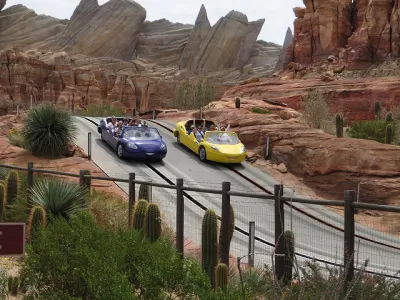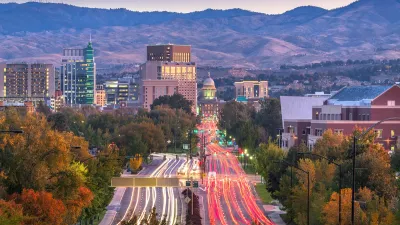While endeavoring to make an honest account of the motivations for driving, it's important to remember that some people really like to drive.

There's an omnipresent Audi commercial where the protagonist "David," obviously living in the future, waxes nostalgic with an A.I. named "Clara" about how driving used to be, before self-driving cars. "Driving wasn't just about being taken from place to place, but going somewhere—feeling something along the way."
Perhaps what David is talking about is the "Joy of Driving," which is far more prevalent a driver of, um, driving than might always be represented in the public discussion about transportation.
Jenna Fortunati, writing for Mobility Lab, has gathered a collection of research on the subject, noting first that researchers acknowledge three motives for driving: instrumental, affective, and symbolic. Fortunati explains the work of a team of researchers at the University of Groningen, who surveyed car commuters in Rotterdam about their motivations for driving—along the lines of the three kinds of motivations mentioned above.
“People more often commute by car when they judge its symbolic and affective functions more favorably,” Steg writes. “Even commuter traffic, which may be considered highly functional, is most strongly-related to non-instrumental motives.”
Other researchers have found similar evidence of driving for the joy in driving. Another study describes the feeling of "carcooning," or turning your car into a relaxation zone.
Fortunati makes no secret that Mobility Lab's interest in understanding these motivations is to provide alternatives to driving, writing: "So how can transit agencies compete? I’m not sure. But understanding this is important, because if we don’t understand why people might like to drive, we can’t reduce the amount of cars on the road – and create a transportation network that is sustainable and works for everyone, not just drivers."
And to make sure the lesson about the joy of driving sticks, here's another paean to cars and driving for the road, from the move Rush (2013).
FULL STORY: How much does the “joy of driving” affect people’s decision to drive?

Maui's Vacation Rental Debate Turns Ugly
Verbal attacks, misinformation campaigns and fistfights plague a high-stakes debate to convert thousands of vacation rentals into long-term housing.

Planetizen Federal Action Tracker
A weekly monitor of how Trump’s orders and actions are impacting planners and planning in America.

San Francisco Suspends Traffic Calming Amidst Record Deaths
Citing “a challenging fiscal landscape,” the city will cease the program on the heels of 42 traffic deaths, including 24 pedestrians.

Defunct Pittsburgh Power Plant to Become Residential Tower
A decommissioned steam heat plant will be redeveloped into almost 100 affordable housing units.

Trump Prompts Restructuring of Transportation Research Board in “Unprecedented Overreach”
The TRB has eliminated more than half of its committees including those focused on climate, equity, and cities.

Amtrak Rolls Out New Orleans to Alabama “Mardi Gras” Train
The new service will operate morning and evening departures between Mobile and New Orleans.
Urban Design for Planners 1: Software Tools
This six-course series explores essential urban design concepts using open source software and equips planners with the tools they need to participate fully in the urban design process.
Planning for Universal Design
Learn the tools for implementing Universal Design in planning regulations.
Heyer Gruel & Associates PA
JM Goldson LLC
Custer County Colorado
City of Camden Redevelopment Agency
City of Astoria
Transportation Research & Education Center (TREC) at Portland State University
Jefferson Parish Government
Camden Redevelopment Agency
City of Claremont





























